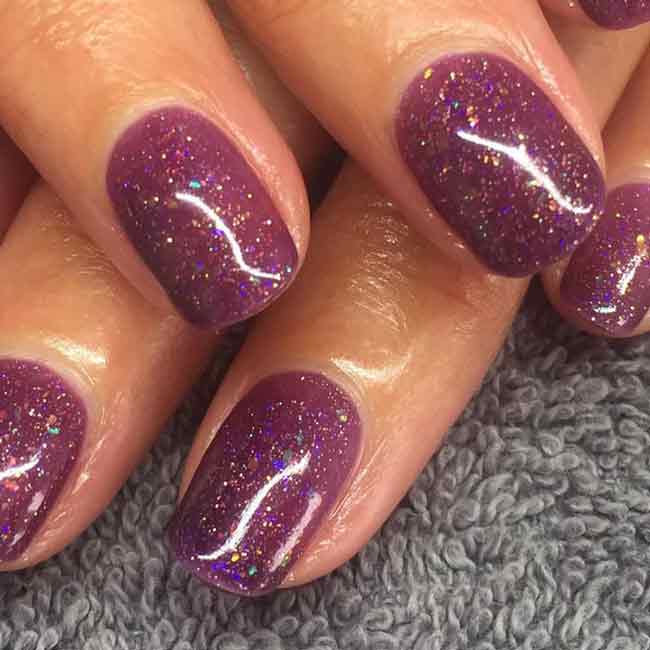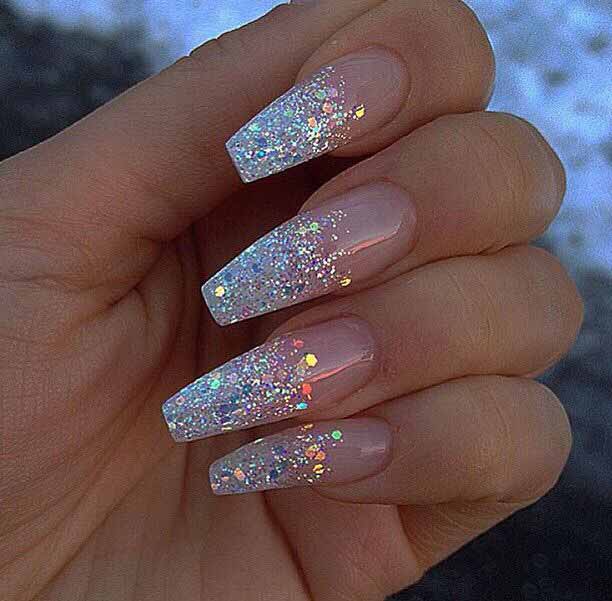Differences between Shellac, Gel and Acrylic Nail Polish
Professional nail polish varieties like gel, shellac, and acrylic nail polishes are often confused by many as they offer similar looking results but they do have some differences in regards to their application, formula, use, and duration on the nails. In this article, we’ll examine all the key similarities and differences between them so you know which one will work best for you, personally or professionally for your clients, especially if you are a beginner.
Difference between Gel and Shellac-Shellac vs Gel Nails
Shellac gel and gel nails are another nail extension pair that many confuse as they too, offer similar looking results ( a smooth and semi- shiny finish) but they differ, both in their duration, application, and removal procedure. Since we already mentioned what are gel nails, we are going to mention what shellac is and how it differs from gels.
Defining Shellac
Shellac gel nails are basically a hybrid of gel and nail polish and for this reason, it combines properties from both. Both shellac and gel nails are mostly suited for professional purposes although it’s possible to use shellac or gel nails at home with a little practice. Shellac is actually the trademark name of CND (which was the first company to invent and register this type of gel/nail polish hybrid) but nowadays they are few brands that offer similar hybrid formulas like Gelish and Bluesky for less cost per bottle.
Shellac, like gel, is available in wide range of colors like reds, pinks, greens, blues, corals, purples, nude shades like beige and light brown, and of course white and black.
Shellac compared to ordinary nail polish is more long-lasting (lasts on average two weeks without chipping) but less long lasting and hard comparing to gel.
The main similarity in the application of Shellac and Gel nails is that both require a base and a top coat and UV curing time to set (usually 30 seconds to a minute on each nail).
Their removal process is different though. In gel nails, an electric file is typically required to remove the gel layer and then a simple swipe of acetone whereas Shellac layers are removed with acetone and cotton wrapped in aluminum foil (for 8-12 minutes) while any excess residue is wiped off with an ordinary paper file or wooden/metallic cuticle pusher.
Which is best- gel or shellac?
Again it depends on what you are looking for. A shellac nail polish may be the best option if:
- You want something that will last a week or two more than your ordinary nail polish but still like to change colors often/don’t want to commit with one color a month.
- You don’t use your hands often for hard tasks like house chores e.g, washing the dishes, cleaning or typing.
- You want to easily remove your shellac nails at home with some acetone and cotton pads without having to visit the salon/nail technician.
- You want something less rigid and abrasive than gel nails
On the other hand, gel nails may be a better option if:
- You want something that will last and protect your nails for up to 6 weeks with no chipping or breakage.
- You use your hands often for heavy home or external tasks like cooking, cleaning and washing the dishes.
- You want a more professional and opaque looking result.
- You don’t mind paying the extra price to time to go to a professional salon.
The Difference between Gel and Acrylic Nails
Before we examine the similarities and differences between gel and acrylics, it would be best to mention exactly what each type is and how it works on your nails as well as their removal process.
Defining Acrylic nails?
Acrylic nails or acrylics are basically a mixture of liquid monomer and powder polymer (available and sold separately) which bond together to form a protective layer over natural or fake nails. Acrylic nails are considered by many as a type of fake nail because they can extend and give length to the natural nails but they are not really fake nails–they just add another layer on top or on the tips of the nails for extra length and protection from breakage. They are typically transparent and make excellent choices for french manicures and nail tips.
The most popular and common acrylic nail combo is pink or peachy tone transparent nail base with white french tips. However, it’s possible to add a layer of color on top and especially on the tips of the nails and gemstones or other nail art for a more colorful and creative finish.
Acrylics nails are worked with a professional nail brush with long and flat bristles and they dry with air at a room temperature usually in a couple of minutes. No UV or LED lamp is required in this case.
The Acrylic Nail removal process doesn’t need any electric file or drilling. Most professional salons that use Acrylic material will soak a cotton pad in pure acetone nail polish remover and then wrap the client’s nails with aluminum foil for 10-12 minutes. Any remaining acrylic bits can also be filed with a curved file and slided off with a cuticle pusher.
What are Gel nails?
Gel nails are painted through a gel-like material which needs is UV reactive, which means that it needs curing under a lamp to dry and set. Gels are divided into soft and hard gels. Hard gels can be used in cases where the nail tip is broken to extend the line, via a form professionals use underneath to shape the newly formed nail. Soft gels, on the other hand are not suitable for this purpose as they are softer and more prone to breakage–soft gels are usually used on top of naturally long nails, if they are not broken.
Gel, requires a base and top coat and usually comes in a variety of colors (many brands carry over 20 shades in their gel nail range).
Gel tips can be applied over natural or fake nails with hard gel and form to extend the length of the nail and offer additional protection.
Gel nails are removed by an electric file machine and wiped with acetone free remover to get rid of excess nail powder.
Acrylics vs Gel Nails:
The main similarity of these two is that they offer long-lasting results (sometimes up to 6 weeks) and professional looking semi-shiny finish. Both can also be used to extend the natural length of the nail, if broken, using a fake nail tip attached to the existing nail bed or a special nail form. They do have though some differences, as we can see from the following:
- Gel nails are generally more safe and less likely to cause any allergic reactions whereas Acrylics bear a higher risk of causing allergic reactions to people that are sensitive to plastic compounds like these.
- Because gel nails require an electronic file/drilling machine to be removed, some experts argue that this process may be more damaging and thinning to natural nails compared to Acrylics, which don’t need an electric file to be removed.
- Some people who tried both Acrylic and gel nails, report that gel nails feel more natural and slightly bending to the touch whereas Acrylics feel more rigid and hard. This of course, depends on the existing nail harness which varies from female to female.
- Gel nails, compared to Acrylics, have a slightly smoother and shiny finish.
- Gel nails are also more opaque and in general, 1-2 layers are enough for fully covering the nails whereas acrylics are more transparent
- Gel nails, unlike Acrylics smell less and don’t have a distinct odor. Acrylics though tend to emit a mild fake plastic odor that may not be heavy but be unpleasant to some.
- Acrylics and acrylic nail extensions are generally harder and more durable than gels so they make excellent choices for people who want to fix their broken nails and make them last longer.
- Acrylics don’t also require any UV curing as they dry and set in the air, on room temperature in a couple of minutes all together. Gel nails on the other hand may require UV curing one by one to get cured and set.
What is Best Acrylic or Gel nails?
There is no right or wrong answer for this as each has its cons and pros. If you are looking for a smoother, colorful result and a bit of nail extension and no fancy odor, gel nails are great choice.
However, if you want something slightly more durable and harder than can be easily removed at home or at a salon with acetone wraps, acrylics may be your best bet. Acrylics are also the ideal choice if you are performing heavy duty tasks with your hands, like cleaning chores and lifting weights as they are stronger than others. Their only downside is that they are available mostly in transparent shades and you’ll have to apply a nail polish layer on top for a completely opaque and full coverage color.
Shellac vs Acrylic nails
Drying
Shellac nails require a UV lamp to dry your nails while the acrylic nails do not require a UV lamp. Also the acrylic nails uses primer or glue like substances to make them stick to your nails while the shellac nails do not require them.
Cost
Shellac nails costs $25 to $ 60 whereby the salons start with a manicure price the add an up charge up to 50% while the acrylic nails are generally cheaper compared to the shellac nails.
Flexibility
Acrylic nails are hard and also look thicker than the shellac nails. If you apply pressure to the acrylic nails it can hurt the original nail while the shellac nails are flexible but not as hard as the acrylic nails.
Originally posted 2020-12-31 08:52:34.



